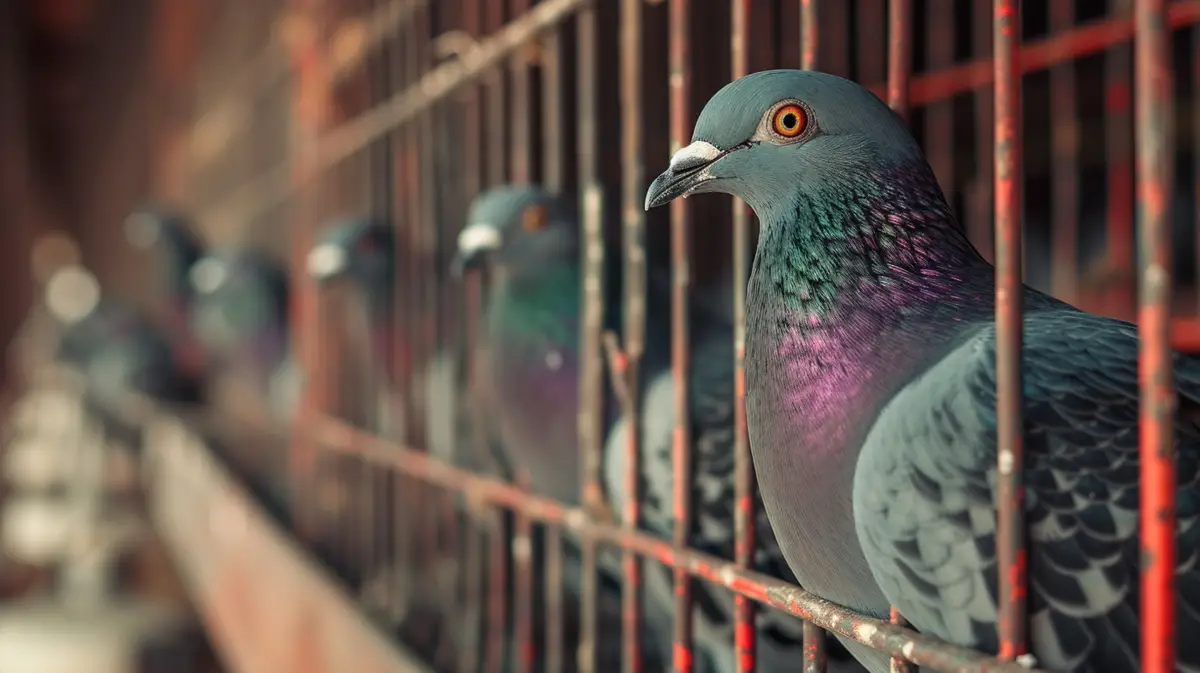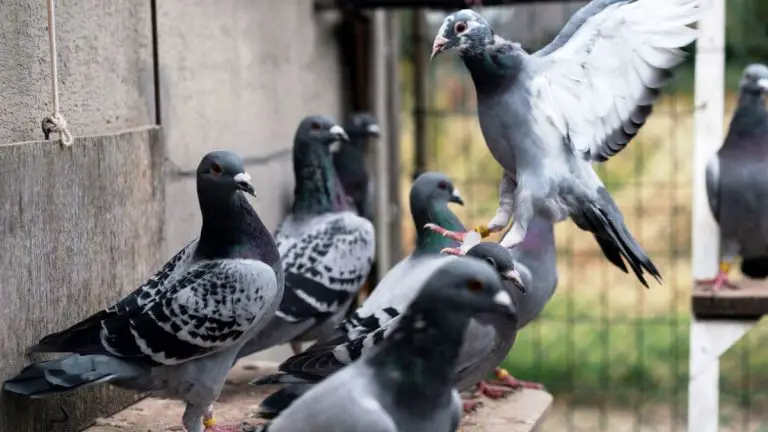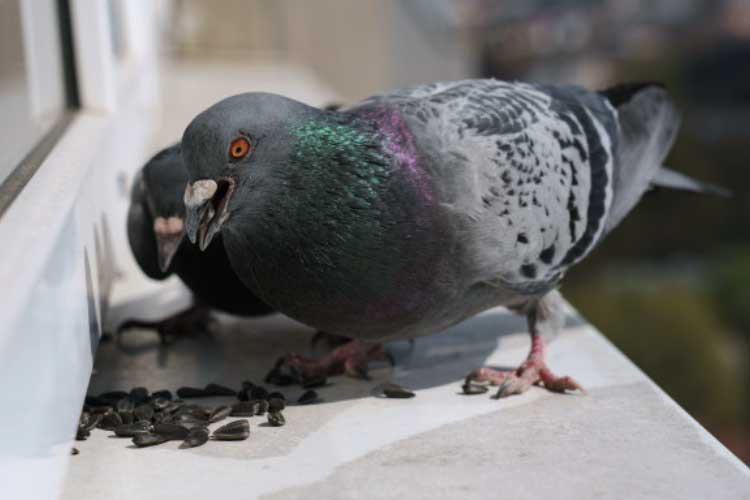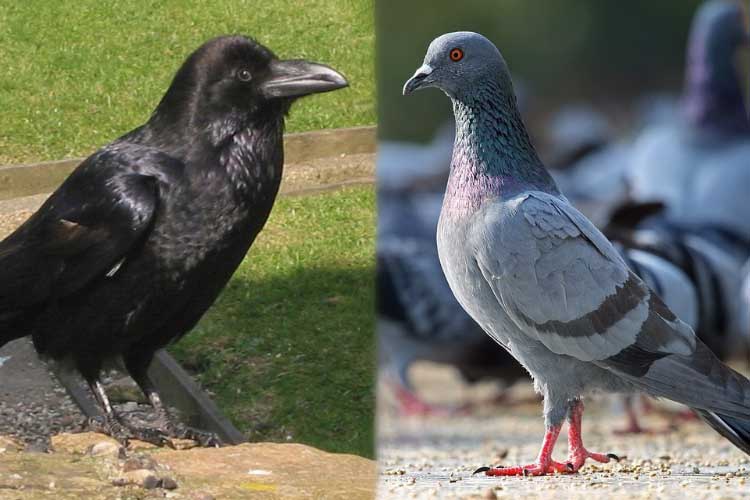Pigeon Training Basics: Techniques and Strategies
Training pigeons can be a fascinating and rewarding experience. These intelligent birds have been used for centuries to deliver messages, participate in races, and even perform tricks. If you’ve ever wondered how to train pigeons or are simply curious about the basics of pigeon training, you’ve come to the right place. In this article, I’ll walk you through the essential steps and techniques to get started with pigeon training. Whether you’re a beginner or have some experience with bird training, this guide will provide you with the knowledge and tips you need to establish a strong foundation in pigeon training. So, let’s dive in and unlock the secrets to successful pigeon training!
Understanding Pigeon Behavior
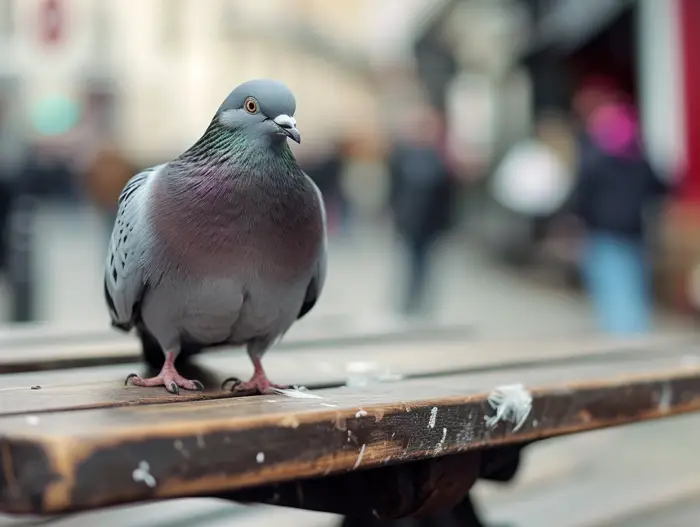
When it comes to training pigeons, understanding their behavior is key. This knowledge will help you establish a strong foundation in pigeon training. So let’s dive into the basics of pigeon behavior:
- Flocking instinct: Pigeons are social birds and have a natural inclination to flock together. They feel safer and more comfortable when they are in a group. Understanding this instinct will help you create a stress-free training environment for your pigeons.
- Homing instinct: Pigeons have an amazing ability to find their way back home from long distances. This homing instinct is what makes them ideal for delivering messages or participating in races. It’s important to consider this instinct when training pigeons and make sure they have a clear understanding of their home base.
- Flight patterns: Pigeons have specific flight patterns that are unique to their species. They soar, glide, and maneuver through the air with grace and agility. Observing their flight patterns will give you valuable insights into their behavior and help you develop training techniques that align with their natural instincts.
- Communication: Pigeons communicate with each other using a variety of vocalizations and body language. They coo, whistle, and even perform certain physical movements to convey messages. By paying attention to their communication cues, you can better understand their needs and desires during training sessions.
- Foraging behavior: Pigeons have a natural instinct to search for food. They peck at the ground, walls, or any surface they believe might hold a tasty treat. Understanding this foraging behavior will help you use positive reinforcement effectively during training, using treats as rewards.
By gaining a solid understanding of pigeon behavior, you’ll be able to train your pigeons more efficiently and effectively. Remember, patience and consistency are key when working with these intelligent birds. In the next section, we’ll explore the essential steps to start training your pigeons.
Creating a Comfortable and Safe Environment

When it comes to training pigeons, creating a comfortable and safe environment is crucial. This will help the birds feel secure and at ease, making the training process more effective. Here are a few key ways to establish such an environment:
- Provide a Suitable Loft: Pigeons need a dedicated space where they can roost, sleep, and feel secure. A well-designed loft will ensure their safety and comfort. It should have proper ventilation, protection from predators, and adequate space for the birds to move around.
- Maintain Cleanliness: Dirty and cluttered surroundings can cause stress and discomfort for pigeons. Regular cleaning of the loft will help prevent the spread of diseases and keep the birds healthy. Additionally, maintaining a clean feeding area will reduce the risk of contamination.
- Ensure Proper Lighting: Adequate lighting is essential for the well-being of pigeons. A well-lit loft not only creates a welcoming environment but also helps regulate their biological rhythms. Maintain a balance between natural light and artificial lighting to create a natural day-night cycle.
- Provide Fresh Water and Nutritious Food: Pigeons need a balanced diet to thrive and perform well during training. Ensure that they have access to clean, fresh water at all times. Also, provide a variety of nutritious seeds and grains to meet their dietary requirements.
- Minimize Stress Factors: Pigeons can be sensitive to loud noises, sudden movements, or other stress-inducing factors. Minimize such disturbances in their environment to help them feel secure. Keeping a calm and quiet atmosphere around the loft will promote a positive learning environment.
By following these guidelines, you can create a comfortable and safe environment for training pigeons. Remember, a stress-free and inviting atmosphere will contribute to successful training sessions. Stay tuned for the next section, where I’ll discuss the importance of positive reinforcement in pigeon training.
Establishing Trust and Bonding with Your Pigeon
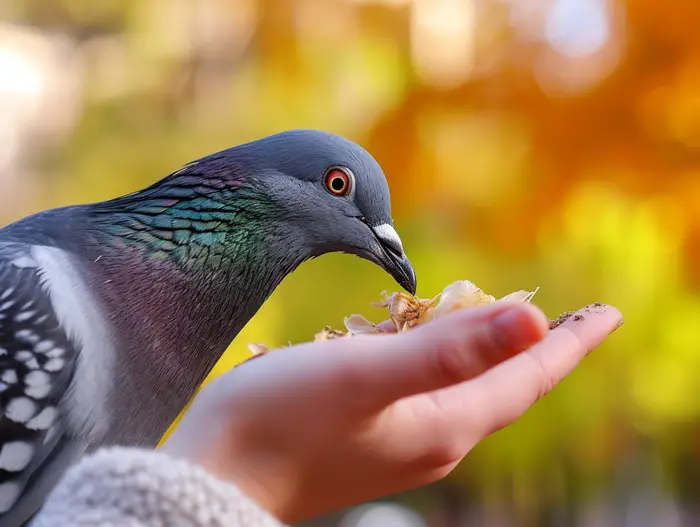
Building a strong bond with your pigeon is crucial for successful training. When your pigeon trusts you, it will be more receptive to learning and following your commands. Here are some tips for establishing trust and strengthening the bond with your pigeon:
- Spend quality time together: Dedicate regular time to interact with your pigeon. This could include simply sitting with it, talking softly, or offering treats. The more time you spend together, the stronger your bond will become.
- Handle with care: Gently handle your pigeon to establish trust. Start by softly stroking its feathers and gradually progress to holding it for short periods. Always be gentle and respectful of the bird’s comfort.
- Positive reinforcement: Reward your pigeon for desired behavior with treats, praise, or a gentle pat. Positive reinforcement helps your pigeon associate good behavior with positive outcomes, strengthening the bond between you.
- Patience and consistency: Pigeons are intelligent creatures, but they also require time to learn and understand. Be patient with your bird and remain consistent in your training methods. Consistency builds trust and helps your pigeon understand what is expected of it.
- Avoid forceful actions: Never use force or punishment when training your pigeon. This will only lead to fear and mistrust. Instead, focus on positive reinforcement and gentle guidance to encourage desired behavior.
By following these tips, you can establish a strong bond and trust with your pigeon, creating a solid foundation for successful training. Remember, every bird is unique, so be patient and adapt your training methods to suit your pigeon’s personality and needs.
Now that you have a foundation of trust and bonding with your pigeon, let’s move on to the next important aspect—creating a comfortable and safe environment for successful training sessions.
Basic Command Training for Pigeons
Training pigeons to follow basic commands can be a fun and rewarding experience. It helps to establish a strong bond with your pigeon and allows you to communicate effectively. Here are some important steps to get started with basic command training:
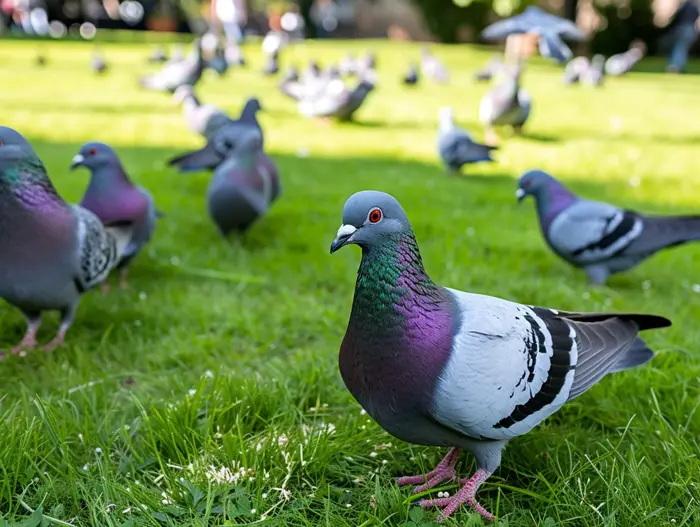
1. Start with a solid foundation
Before you begin teaching commands, make sure your pigeon has a good understanding of basic handling and trust. This can be achieved through spending quality time together, handling the bird gently, and using positive reinforcement techniques. When your pigeon feels comfortable and trusts you, it will be more receptive to learning commands.
2. Choose simple and clear commands
When introducing commands, it’s important to use short and simple words that are easy for your pigeon to understand. Some commonly used commands include “come,” “stay,” “down,” and “fly.” Use a consistent tone and repetition to help reinforce the meaning of each command.
3. Break down the training into steps
To help your pigeon understand each command, break down the training into small, achievable steps. Start with the basic understanding of the command and gradually add complexity as your pigeon progresses. For example, when teaching the command “come,” begin by having your pigeon move a short distance towards you, then gradually increase the distance over time.
4. Use positive reinforcement
Rewarding your pigeon with treats or praise is an essential part of command training. Whenever your pigeon successfully follows a command, immediately praise and reward it. This positive reinforcement helps to reinforce the desired behavior and motivates your pigeon to continue learning.
5. Be patient and consistent
Training takes time and consistency. It’s important to be patient with your pigeon and not rush the process. Each pigeon has its own learning pace, so allow for progress at its own speed. Consistency is also key – use the same command word, tone, and body language each time to avoid confusion and establish a clear association between the command and action.
6. Practice regularly
Regular practice and reinforcement are crucial for maintaining learned commands. Make sure to allocate dedicated training sessions where you can work on strengthening your pigeon’s understanding and responsiveness. Practicing in different environments and situations will help your pigeon generalize the commands and respond effectively.
Training Techniques and Strategies

When it comes to pigeon training, there are several effective techniques and strategies that can help you achieve success. Here are a few methods that I have found to be particularly effective:
- Operant Conditioning: One of the most popular and effective training techniques is known as operant conditioning. This involves using positive reinforcement to reinforce desired behaviors and discourage undesired behaviors. For example, when a pigeon correctly follows a command, I’ll reward it with a treat or a gentle pat on the head. This helps to strengthen the association between the desired behavior and the reward.
- Clicker Training: Another technique that can greatly enhance pigeon training is clicker training. This involves using a distinct clicking sound to indicate to the pigeon that it has performed the desired behavior correctly. By pairing the click with a reward, such as a treat, the pigeon quickly learns to associate the sound with positive reinforcement.
- Targeting: Targeting is a technique that involves teaching a pigeon to touch a specific object with its beak or foot. This can be helpful in directing the pigeon’s attention and guiding it through various commands. To teach targeting, I’ll hold out a small object, such as a stick, and when the pigeon touches it with its beak or foot, I’ll reward it. With consistent practice, the pigeon learns to associate the object with the desired behavior.
- Shaping: Shaping is a technique that involves breaking down complex behaviors into smaller, more manageable steps. By reinforcing each small step towards the desired behavior, the pigeon gradually learns and understands what is expected of it. For example, if I want to train a pigeon to spin in a circle, I’ll start by reinforcing any movement in that direction, and then gradually increase the criteria until the pigeon is performing the complete behavior.
Conclusion
Training pigeons can be a fascinating and rewarding endeavor. In this article, I have discussed the basics of pigeon training, including the importance of building trust and establishing a positive relationship with your bird. We also explored various techniques such as operant conditioning, clicker training, targeting, and shaping, which can be used to teach pigeons specific behaviors.
By using these techniques, you can strengthen the bond between you and your pigeon, and guide them through a variety of commands. Remember to be patient and consistent in your training efforts, as pigeons are intelligent creatures that respond well to positive reinforcement.
Whether you are training pigeons for racing, homing, or simply as pets, understanding the fundamentals of pigeon training is essential. With practice and dedication, you can develop a strong and trusting relationship with your pigeon, and enjoy the benefits of their incredible abilities.
